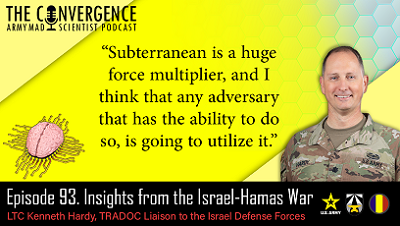“Subterranean is a huge force multiplier, and I think that any adversary that has the ability to do so, is going to use it.”
[Editor’s Note: It has almost been a decade since U.S. forces and coalition partners assisted Iraqi government forces in dislodging ISIS fighters from Mosul in what some observers described as the toughest urban battle since World War II.  With the Islamic Resistance Movement’s (aka Hamas) October 7, 2023 cross-border terror attacks on Israel and subsequent Israel Defense Forces’ combat operations in Gaza, new lessons are emerging about engaging an entrenched adversary across 360 square kilometers of densely populated (over 2 million Palestinian civilians) and highly urbanized terrain.
With the Islamic Resistance Movement’s (aka Hamas) October 7, 2023 cross-border terror attacks on Israel and subsequent Israel Defense Forces’ combat operations in Gaza, new lessons are emerging about engaging an entrenched adversary across 360 square kilometers of densely populated (over 2 million Palestinian civilians) and highly urbanized terrain.
As Dr. Brent Sterling reminded our readers and listeners, other observers are also watching and learning — especially our pacing challenge China with regard to potential operations in dense urban centers on Taiwan, North Korea with its subterranean operations beneath the Demilitarized Zone, and Iran and its “Axis of Resistance” in continuing to target U.S. and Israeli interests.
In today’s episode of The Convergence podcast, Army Mad Scientist sits down with LTC Kenneth Hardy, U.S. Army Training and Doctrine Command (TRADOC) liaison officer to the Israel Defense Forces, and discusses the on-going Israel/Hamas Conflict and key lessons the U.S. Army is learning about contemporary asymmetric warfare in dense urban terrain — Read on!]
[If the podcast dashboard is not rendering correctly for you, please click here to listen to the podcast.]
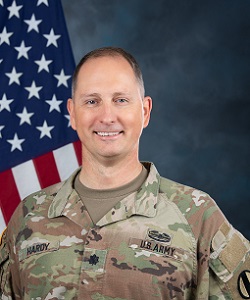 LTC Kenneth Hardy currently serves as the U.S. Army TRADOC Liaison Officer to the Israel Defense Forces. A Middle East Foreign Area Officer, LTC Hardy’s previous assignments have included In-Region Training (IRT) as a U.S. Security Cooperation Officer to the Moroccan Military in Rabat, Morocco; Political/ Military advisor to the Commander, USARCENT, and Security Cooperation/Liaison Officer to Kuwait and Qatar Armed Forces; Security Assistance Officer to the Egyptian Land Forces and Border Guard in Cairo, Egypt; and Middle East Analyst and CENTCOM J2 International Engagements, Tampa, Florida. LTC Hardy has a Bachelor’s Degree in Chemistry from the University of Central Oklahoma, an Associate’s Degree in Arabic from the Defense Language Institute, and a Master’s Degree in International Relations and Policy from the Middlebury Institute of International Studies at Monterey.
LTC Kenneth Hardy currently serves as the U.S. Army TRADOC Liaison Officer to the Israel Defense Forces. A Middle East Foreign Area Officer, LTC Hardy’s previous assignments have included In-Region Training (IRT) as a U.S. Security Cooperation Officer to the Moroccan Military in Rabat, Morocco; Political/ Military advisor to the Commander, USARCENT, and Security Cooperation/Liaison Officer to Kuwait and Qatar Armed Forces; Security Assistance Officer to the Egyptian Land Forces and Border Guard in Cairo, Egypt; and Middle East Analyst and CENTCOM J2 International Engagements, Tampa, Florida. LTC Hardy has a Bachelor’s Degree in Chemistry from the University of Central Oklahoma, an Associate’s Degree in Arabic from the Defense Language Institute, and a Master’s Degree in International Relations and Policy from the Middlebury Institute of International Studies at Monterey.
Army Mad Scientist sat down with LTC Hardy to discuss his observations regarding the October 7th Hamas attacks on Israel and insights into how this larger conflict is informing the U.S. Army about the Operational Environment. The following bullet points highlight key insights from our conversation:
-
-
-
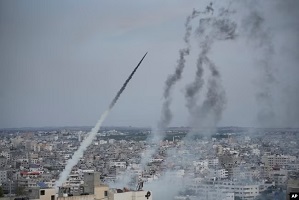
Rockets launched by Hamas from the Gaza Strip towards Israel on Oct. 7, 2023 / Photo Source: AP via Voice of America The ongoing conflict between Israel and Hamas showcases the battle between low-tech and high-tech — for example Hamas employed massed salvoes of inexpensive, home-made Qassam rockets and grenades dropped by drones to defeat parts of Israel’s multi-million-dollar Iron Dome missile defense system.
-
-
-
-
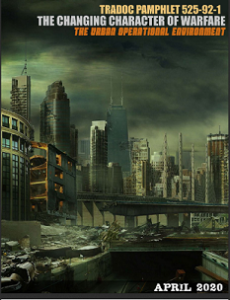 Close integration of maneuver and specialized units is vital to any future conflict — especially so on complex terrain. The mobility of the IDF’s mechanized forces is being challenged in Gaza’s dense urban environment, with rubble further hampering maneuver, forcing them to learn on the fly from already thinly-stretched combat engineers.
Close integration of maneuver and specialized units is vital to any future conflict — especially so on complex terrain. The mobility of the IDF’s mechanized forces is being challenged in Gaza’s dense urban environment, with rubble further hampering maneuver, forcing them to learn on the fly from already thinly-stretched combat engineers.
-
-
-
-

Gaza tunnel / Photo by Marius Arnesen, via Wikimedia Commons, Creative Commons Attribution-Share Alike 2.0 Generic Subterranean operations is a huge force multiplier. Hamas leveraged years of experience excavating and improving its network of tunnels to maximize their survivability, incorporating twists and turns to baffle blast effects and create chokepoints to slow the IDF’s infiltration.
-
-
-
-
- Air superiority needs to be redefined. The IDF assumed air superiority through its investment in
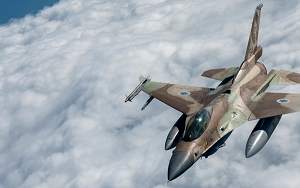 exquisite, finite, capital-intensive, manned aircraft, but have been significantly challenged to identify, track, and target the host of small Unmanned Aerial Systems employed by Hamas.
exquisite, finite, capital-intensive, manned aircraft, but have been significantly challenged to identify, track, and target the host of small Unmanned Aerial Systems employed by Hamas.
- Air superiority needs to be redefined. The IDF assumed air superiority through its investment in
-
-
-
- The U.S. Army cannot assume success. The IDF’s overconfidence in their air and subterranean superiority blinded them to a low-tech ground invasion across the border. Adaptation is a critical element of
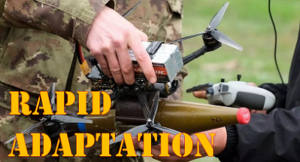 victory that requires innovation and innovative thinking. The U.S. Army will be challenged to keep pace with any adversary that can adapt at a rapid rate on the battlefield.
victory that requires innovation and innovative thinking. The U.S. Army will be challenged to keep pace with any adversary that can adapt at a rapid rate on the battlefield.
- The U.S. Army cannot assume success. The IDF’s overconfidence in their air and subterranean superiority blinded them to a low-tech ground invasion across the border. Adaptation is a critical element of
-
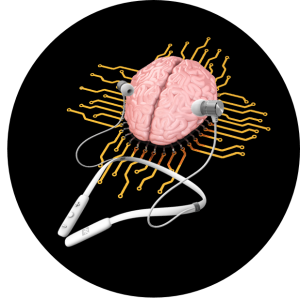
Stay tuned to the Mad Scientist Laboratory for our next episode of The Convergence podcast on 28 March 2024, featuring Selina Hayes, Founder and CEO of The Hayes Group International, discussing space investment and operations in Africa — a critical region of focus for our adversaries — and the potential implications for the U.S. Army.
>>>>REMINDER: Army Mad Scientist wants to crowdsource your thoughts on asymmetric warfare — check out our Operational Environment Wicked Problems Writing Contest.
All entries must address the following topic:
How have innovations in asymmetric warfare impacted modern large scale and other combat operations, and what further evolutions could take place, both within the next 10 years and on towards mid-century?
We are accepting three types of submissions:
-
-
- 1500-word Non-Fiction Essay
-
-
-
- 1500-word Fictional Intelligence (FICINT) Story
-
-
-
- Hybrid 1500-word submission incorporating a short FICINT vignette, with a Non-Fiction Essay expounding on the threat capabilities described in the vignette
-
 Anyone can participate (Soldiers, Government Civilians, and all global citizens) — Multiple submissions are encouraged!
Anyone can participate (Soldiers, Government Civilians, and all global citizens) — Multiple submissions are encouraged!
All entries are due NLT 11:59 pm Eastern on May 16, 2024 at: madscitradoc@gmail.com
Click here for additional information on this contest — we look forward to your participation!
If you enjoyed this post, check out the following related content:
TRADOC Pamphlet 525-92-1, The Changing Character of Warfare: The Urban Operational Environment, April 2020.
Learning from LSCO: Applying Lessons to Irregular Conflict, by Ian Sullivan and Kate Kilgore
Unmanned Capabilities in Today’s Battlespace
Death From Above! The Evolution of sUAS Technology and associated podcast, with COL Bill Edwards (USA-Ret.)
The Operational Environment’s Increased Lethality
Extremism on the Horizon: The Challenges of VEO Innovation, by Colonel Montgomery Erfourth and Dr. Aaron Bazin
Current and Future Operations in Megacities Conference: Observations and Recommendations, facilitated in Tokyo on 16-19 July 2019 — also review this conference’s complete Proceedings, as well as select speakers’ slide decks, presenter biographies, and conference agenda.
Megacities: Future Challenges and Responses, documenting key insights from the Multi Domain Battle (MDB) In Megacities Conference, facilitated at Fort Hamilton, New York, on 3-4 April 2018, as well as the agenda, presenter biographies, slide decks, associated videos of presentations, and conference Proceedings.
War in Ukraine: The Urban Fight is Happening Now and associated podcast, and Ukraine: All Roads Lead to Urban and associated podcast, with MAJ John Spencer (USA-Ret.)
A Chinese Perspective on Future Urban Unmanned Operations
Dense Urban Environments (DUE): Now through 2050
Dense Urban Hackathon – Virtual Innovation
2nd Dense Urban Armored Brigade (DUAB) Personnel Evaluations, by Ed dos Santos, Jr.
Fifth Generation Combat: SubTerranean Ops in Singapore, by the Radio Research Group
Other People’s Wars: The US Military and the Challenge of Learning from Foreign Conflicts and associated podcast, with Brent L. Sterling
Disclaimer: The views expressed in this blog post do not necessarily reflect those of the U.S. Department of Defense, Department of the Army, Army Futures Command (AFC), or Training and Doctrine Command (TRADOC).

